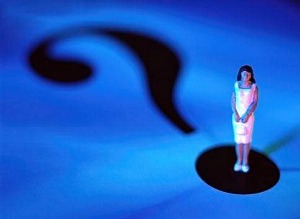Is this Vibro-Acoustic Disease? (Germany)
Mar 19, 2011
·
Is this VAD? We don’t know. Read on.
Marco Bernardi and his wife Jutta Reichardt have been living next door to wind turbines (Schleswig-Holstein, Germany) since 1994.
At first it was 3. Each, 39m (128ft) high and each 200kW, 450-750m (0.28-0.47mi) from their home.
Soon, several more went up, with the same specifications—except closer still, 320-450m (0.20-0.28mi).
The building frenzy began in 2001, when 115 more appeared like huge mushrooms, 2.3km (1.4mi) to 15km (9mi) from their front door. This last batch ranged from 1 to 5MW, with a height of 90m (295ft) to 189m (620ft).
The Wind Turbine Syndrome symptoms started soon after the initial 3 began operation. By Marco and Jutta’s account, the symptoms have markedly worsened over time. (The following is an imperfect, digital translation.)
Jutta: tinnitus (4 different tones), insomnia, nausea (for about 3 years continuously), high blood pressure (at certain wind directions), angina pectoris vibrating of the upper body, ear pressure (a feeling like cotton wool in the ears), urgency, difficulty falling asleep, palpitations, heart flutters or tachycardia, reddish-white ulcers in the mouth, fluctuating blood pressure at highly variable pulse, internal unrest with urge to work more and more.
Marco: tinnitus (4 different tones), sleep disorders, high blood pressure (at certain wind directions), angina pectoris (not as pronounced as with Jutta), vibrating of the upper body, ear pressure (a feeling like cotton wool in the ears), difficulty falling asleep, palpitations, heart flutters or tachycardia, reddish-white ulcers in the mouth, fluctuating blood pressure at highly variable pulse, lethargy in conjunction with internal unrest.
Recently, Nina Pierpont was notified by Marco that Jutta is now hospitalized with tissue damage which Nina suspects the Vibro-Acoustic Disease (VAD) research group in Portugal (Castelo Branco and Alves-Pereira) might well diagnose as VAD—from the turbines.
Vibro-Acoustic Disease? Nina explains the difference between VAD and WTS as follows. (See Wind Turbine Syndrome, 2009, pp. 13-14.)
Readers should understand that Wind Turbine Syndrome is not the same as Vibroacoustic Disease.10 I say this because the two are often equated in the popular media. The proposed mechanisms are different, and the noise amplitudes are probably different as well.
Wind Turbine Syndrome, I propose, is mediated by the vestibular system—by disturbed sensory input to eyes, inner ears, and stretch and pressure receptors in a variety of body locations. These feed back neurologically onto a person’s sense of position and motion in space, which is in turn connected in multiple ways to brain functions as disparate as spatial memory and anxiety. Several lines of evidence suggest that the amplitude (power or intensity) of low frequency noise and vibration needed to create these effects may be even lower than the auditory threshold at the same low frequencies.
Re-stating this, it appears that even low frequency noise or vibration too weak to be heard can still stimulate the human vestibular system, opening the door for the symptoms I call Wind Turbine Syndrome. I am happy to report there is now direct experimental evidence of such vestibular sensitivity in normal humans.11
Vibroacoustic Disease, on the other hand, is hypothesized to be caused by direct tissue damage to a variety of organs, creating thickening of supporting structures and other pathological changes.12 The suspected agent is high amplitude (high power or intensity) low frequency noise. Given my research protocol, described above, my study is of course unable to demonstrate whether wind turbine exposure causes the types of pathologies found in Vibroacoustic Disease, although there are similarities that may be worthy of further clinical investigation, especially with regard to asthma and lower respiratory infections.
10 Castelo Branco NAA, Alves-Pereira M. 2004. Vibroacoustic disease. Noise Health 6(23): 3–20.
11 Todd NPMc, Rosengren SM, Colebatch JG. 2008. Tuning and sensitivity of the human vestibular system to low-frequency vibration. Neurosci Lett 444: 36–41.
12 Castelo Branco and Alves-Pereira 2004.
Extreme WTS can, it seems, cross the line into VAD. At least this is Nina’s hunch, from conversations with the Portuguese VAD research group and her reading of the VAD literature.
Nina’s concern is that Jutta Reichardt has perhaps crossed that line.
Watch the video, below, made by Marco & Jutta last fall, I believe. (Be sure to turn up your speakers; the native volume of the video is exceptionally low.)
·



Comment by Bart Sutton on 03/19/2011 at 3:19 pm
After checking out the American Wind Energy Association website, it turns out that it’s the people’s fault because they thought they would be impacted. The sad part is they went and told their animals so they were affected, too. Please be careful and don’t tell anyone that infrasonic sound can hurt them.
If you don’t believe me, just check and see how high the rate of sunburn increased when everyone was told that UV could not only give you sunburn but skin cancer, as well. It must be their own fault for believing it; after all, you can’t see it.
Comment by Colette McLean (Ontario, Canada) on 03/21/2011 at 8:16 am
As a resident living with turbines, I can see how symptoms progress with time, with some people, and are immediate with others.
The saddest part is that those who are suffering are not able to associate their symptoms to the turbines.
I now have neighbours talking about elevated blood pressure and migraine headaches. Yet they continue to deny that the turbines are the result of this.
What can one do?